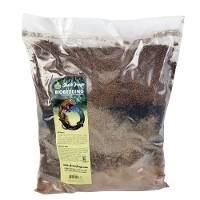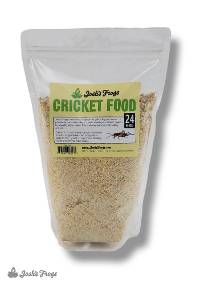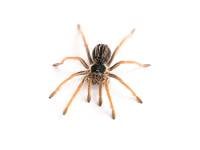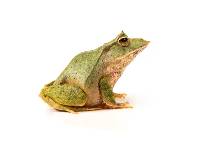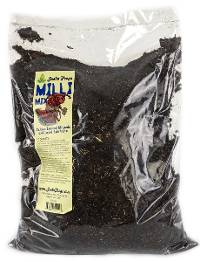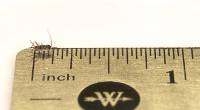Josh's Frogs
Pinkfoot Goliath Birdeater Tarantula - Theraphosa apophysis | 3 inch (Captive bred)
Pinkfoot Goliath Birdeater Tarantula - Theraphosa apophysis | 3 inch (Captive bred)
$199.99 0.0 out of 5 stars
(0)
0.0 out of 5 stars
(0)About This Product
Special Concerns:
Theraphosa species have some of the worst urticating hairs in the hobby and should not be taken lightly.
When doing tank maintenance, face coverings and thick gloves are recommended, as they’re quick to kick hairs. Their substrate should not be touched without the gloves on. When changing or modifying the enclosure, keep in mind that they lay down these urticating hairs in the substrate and webbing to prevent predators from entering. Their hairs can feel like a cross between fiberglass insulation and poison ivy, and can spread across your body through direct contact.
Environmental Caution:
When a damp environment has too little air circulation, this can lead to an anaerobic environment.
Where the typical aerobic bacteria helps keep certain types of waste from building up, they are instead replaced by anaerobic bacteria whose waste is more likely to be toxic and harmful. This is often accompanied by a strong swampy smell.
To guard against anaerobic environments, it is important to monitor and control moisture in the environment as well as air quality. One way to maximize both is to have plentiful live plants as the byproduct of photosynthesis is oxygen and water.
Defining Characteristics:
- Tend to have a fast growth rate, gaining several inches each year
- Belong to the genus containing the largest tarantula species in the world
- Have type IV urticating hairs, which are said to be the most irritating
- Despite having the nickname of “Birdeater”, they do not actually eat birds
- Their eggs can be the size of a pea!
Name: Theraphosa apophysis is also commonly known as the Pinkfoot Goliath Birdeater.
Recommended Enclosure Size & Setup: Theraphosa apophysis is a terrestrial species. Surface area of the enclosure should be no less than two times the spider's diagonal leg span in one direction, and three times the diagonal leg span in the other. We recommend against allowing your terrestrial spider more than two times their diagonal leg span as head space above their substrate as a fall from any higher could result in serious injury.
The enclosure should be tall enough to accommodate 2-3 inches of substrate for slings and 4+ inches for adults. ABG mix, Dig-It, and coco cradle are all good substrate options for this species, but our Pet Bug Team prefers ABG all the way!
Temperature (°F): This species thrives in the mid 70s to low 80s, so a temperature of 75 degrees is ideal. Temperatures regularly dipping below 65 degrees, or spiking above 85 degrees should be avoided.
A reliable thermometer is strongly recommended.
Humidity: These spiders thrive in a humid environment, so the recommended ambient humidity should stay between 75% and 80%. This can be achieved by making sure the substrate is always at least slightly moistened with at least one dry corner for the animal to go to. Depending on your location, you may need tools such as a humidifier to achieve this environment. A hygrometer is a great way to monitor the humidity for your animal and see any needed adjustments.
The enclosure sides and décor should be spritzed lightly around 2 times a week to provide your spiderling droplets to drink from and to keep humidity up, but do not spray your spider directly.
Size: At the time of sale, this animal will be at least 3 inches. Females can grow to be up to 10 inches, and typically the males are a bit smaller.
We use diagonal leg span to measure our spiders.
Age: Before making this species available to our customers, we ensure that they are well-established. This means our spiders are generally molted to a minimum of third instar and will have hatched two to three months prior to being listed for sale.
For spiders that we have not produced in house, we like to get 2 to 3 solid feedings in as well as the aforementioned minimums. They go through a 2-week minimum quarantine process to ensure the health of the animal.
For this species, the average lifespan is 4-8 years in males, and 10-15 years in females when provided the adequate environment.
Feeding: At the time of sale, this animal is eating 2 to 3 - 3/4 inch crickets once per week. There are a variety of appropriate prey items that you can offer, such as roaches, waxworms, black soldier fly larvae, hornworms, and silkworms. Consider feeding your prey items with our gutload formula to give your pet well-rounded nutrition.
We recommend that the prey items not be much longer than the tarantula's “head” is wide. Larvae are an exception—our larvae are harmless. Since they are very high in fat, they're not the best staple diet, however they make a great weight gain supplement.
Remove uneaten prey items after 24 hours, these may stress your animal out or endanger the spider during molting. Never attempt to feed a freshly molted tarantula less than a week after their molt to prevent injury to the spider. Depending on its age, the hardening process could take anywhere from 48 hours all the way up to a week.
Sexing: Due to age, Theraphosa apophysis sold by Josh’s Frogs are sold as unsexed.
Coloration/Patterning: As spiderlings, Theraphosa apophysis are a dark brown tone with bright pink feet. As they mature, they lose their pink feet and grow into the big, beautiful giant brown spider they're known for being!
Social Behavior: Theraphosa apophysisis not a sociable animal and should be housed as an individual. Attempts at cohabitation can result in cannibalism.
Natural Range: Theraphosa apophysis are native to Venezuela and Brazil.
Links of Interest:
- Arachnoboards: a community of spider enthusiasts that will be able to or have already answered almost any question you can think of with regards to tarantulas.
Still not sure if Theraphosa apophysis from Josh's Frogs is the right pet bug for you? Read the reviews below and see what other customers are saying!
Shipping
After placing an order containing a live animal, you will receive a scheduling email containing our JotForm scheduling link to schedule your new pet's delivery date.
With this scheduling link, you will be able to schedule your order's delivery up to 30 days in advance. You will be able to choose a date of delivery for Tuesday-Saturday (Saturday arrival depends on the carrier's service availability) with the estimated time of arrival generally being 12pm, or 4:30pm for more rural areas. Overnight lows must be above 40°F to ship directly to you (or above 30°F for FedEx Ship Center pickups) as well as below 90°F by estimated time of arrival.
If you require further assistance, or prefer to talk to one of our Customer Service agents, please feel free to reach out to our [email protected] email or our phone line 1-800-691-8178.
Other Customers Also Bought
Customer Reviews
0.0 out of 5 stars
Review data
5 star reviews
- 0%
4 star reviews
- 0%
3 star reviews
- 0%
2 star reviews
- 0%
1 star reviews
- 0%

